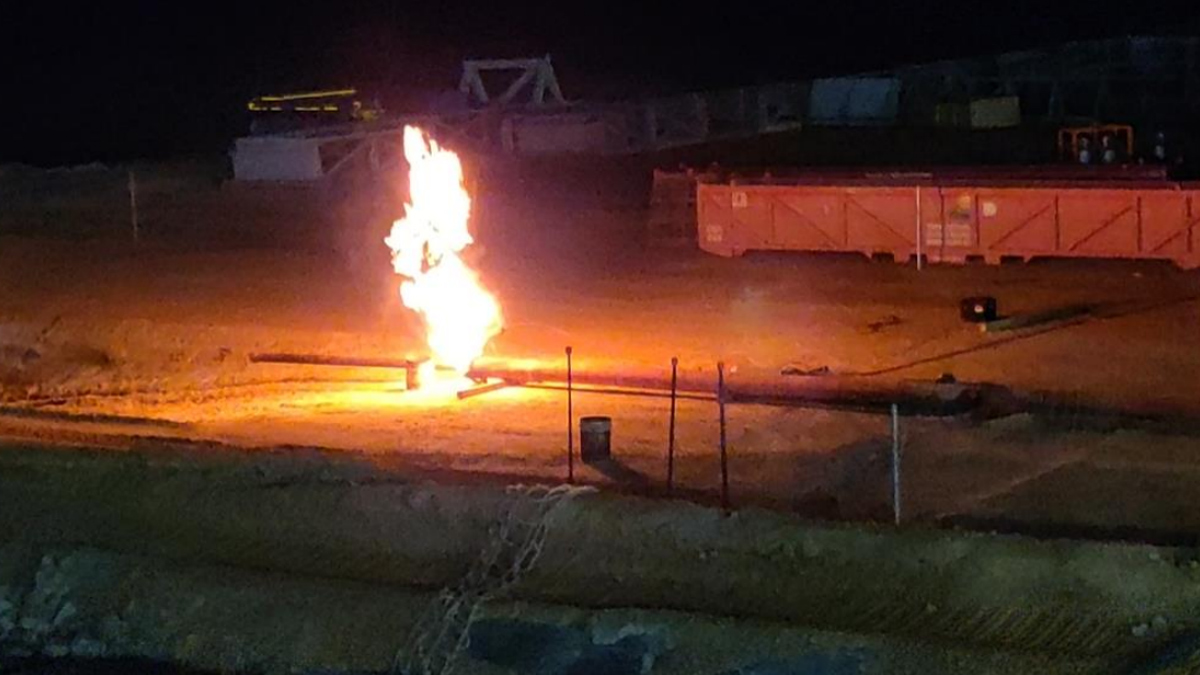The stakes are high – will Strike strike out or hit a gas home run?

Will Strike Energy hit it out of the park with West Erregulla-3? Pic: Getty Images
If you have any interest at all in Australian oil and gas stocks, you will know that Strike Energy (ASX:STX) suspended its West Erregulla-3 well last week after intercepting an abnormally over-pressured Permian gas column.
Delays are typically seen in a negative light but that is certainly not the case here with shares in the company climbing more than 17 per cent since the announcement was made to 34 cents.
The company itself was positive about the development, noting that while the decision to suspend the well was made due to the potential for the gas pressure to exceed current design tolerances of the well, it could also translate into excellent well productivity.
Analysis of the gas produced during flaring of West Erregulla-3 has also confirmed that its composition is similar to gas produced during flow testing at Strike’s highly successful West Erregulla-2 appraisal well.

West Erregulla-2 flowed 69 million standard cubic feet of gas from the primary target Kingia Sandstone during testing in October last year, confirming the field as one of the best resources in the onshore Perth Basin.
So just what has Strike uncovered and what is the potential impact of the discovery?
Strike out or home run?
Stockhead’s resident energy expert Peter Strachan says the abnormally high pressures are likely caused either by local tectonic activity where gas was formed deeper in the sequence (at higher pressure) and then lifted to shallower zones where “normal” pressures would be lower or when the sequence was “squeezed” by some faulting or folding.
He reckons the resulting high pressures could either be a good thing – as Strike believes is likely – or it could mean that the formation is more complex than expected and may result in a more expensive well completion.
Strike has already flagged that it will return to complete West Erregulla-3, albeit with additional well engineering and equipment to handle higher pressures.
This already implies that completing the well will cost more than originally budgeted for, though whether this would be just to account for the high pressures or complex formation remains to be seen.
Should West Erregulla-3 prove to be more complex than expected or be non-commercial, the result would be disappointing but certainly not fatal for Strike or its partner Warrego Energy (ASX:WGO).
West Erregulla-3 is testing the potential continuation of the gas accumulation made by West Erregulla-2 and a failure will in no way take away from the success of the latter.
On the other hand, a success at West Erregulla-3 could indicate that Strike has a pretty hefty resource.
Strike has already defined a gross contingent resource of almost 1.2 trillion cubic feet of gas at West Erregulla and a success in the northern well will add significant upside.
How much remains to be seen but using a $4 per gigajoule gas price – and given that every thousand cubic feet of gas equates to just over 1 gigajoule – the 1.2Tcf resource can be roughly calculated as having an in-ground value of about $5 billion ($2.5bn net to Strike).
Needless to say, any increases from West Erregulla-3 will further increase this value.
Perth Basin gas stock watch
Strachan notes that both West Erregulla and the nearby Waitsia (Mitsui and Beach) gas fields have changed the geological interpretation of the Perth Basin, making nearby gas look more interesting.
So who are some of the companies with operations in the region?
Those looking for Strike’s apparent magic touch but unwilling to pay the higher price associated with a successful explorer might have Talon Petroleum (ASX:TPD), which took up a 45 per cent stake in the Walyering play, on their radar.
Strike and Talon will drill the Walyering-5, which will test an in-place best estimate prospective resource net to Talon of up to 38.7 billion cubic feet of gas and 0.98 million barrels of condensate.
Walyering-5 has been de-risked by Strike’s success at West Erregulla and will be drilled using the same rig.
Norwest Energy (ASX:NWE) and its operating partner Mineral Resources (ASX:MIN) expect to start drilling the Lockyer Deep-1 well later this year.
Lockyer Deep is just 15km east of Waitsia and 15km north of West Erregulla.
It targets the same Permian Kingia and High Cliff targets that flowed 69 million standard cubic feet of gas per day during testing at West Erregulla-2.
Additional hydrocarbon potential exists within the shallower Wagina formation.
Pilot Energy (ASX:PGY) holds two exploration permits over the Leschenault conventional gas prospect, a three-way dip feature that has two structural culminations, either of which is a potential drilling location for a vertical well to test the Permian Sue Sandstone and the Triassic Lesueur Sandstone targets.
It is also pushing the development of an offshore wind and onshore wind and solar project that could support a renewable hydrogen project.
At Stockhead, we tell it like it is. While Talon Petroleum is a Stockhead advertiser, it did not sponsor this article.
Related Topics

UNLOCK INSIGHTS
Discover the untold stories of emerging ASX stocks.
Daily news and expert analysis, it's free to subscribe.
By proceeding, you confirm you understand that we handle personal information in accordance with our Privacy Policy.








